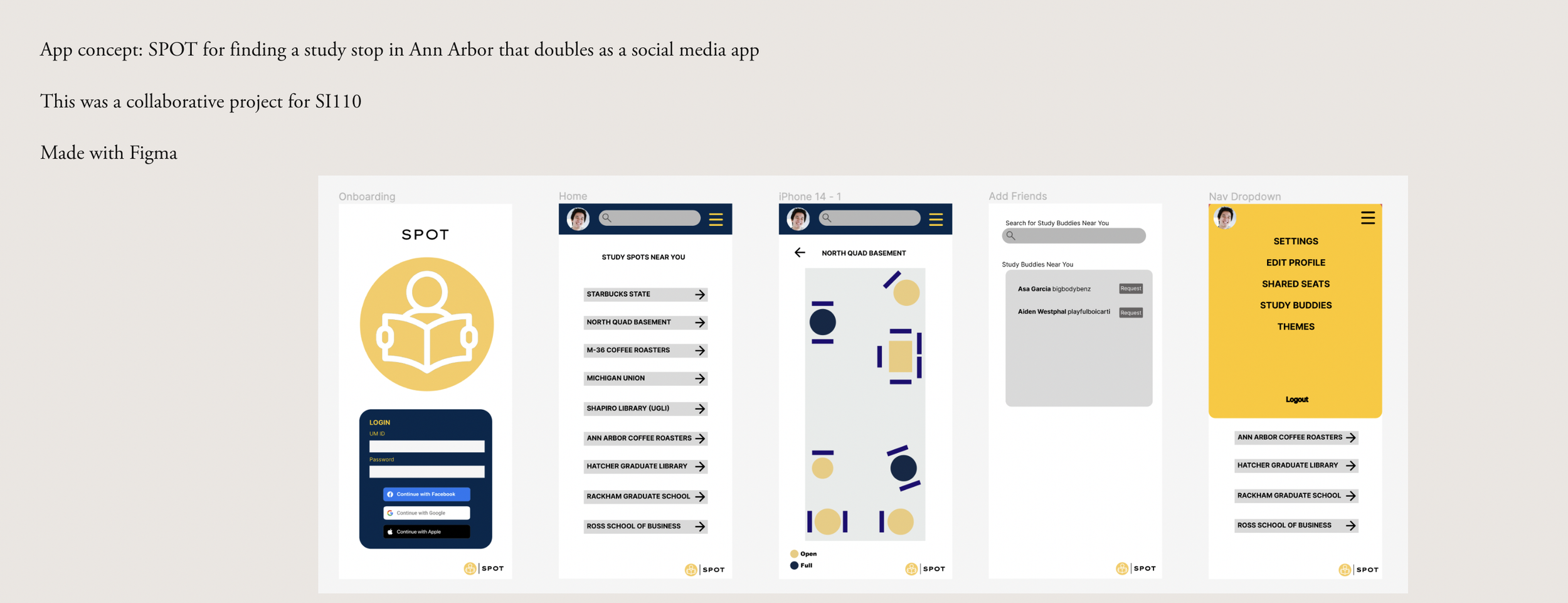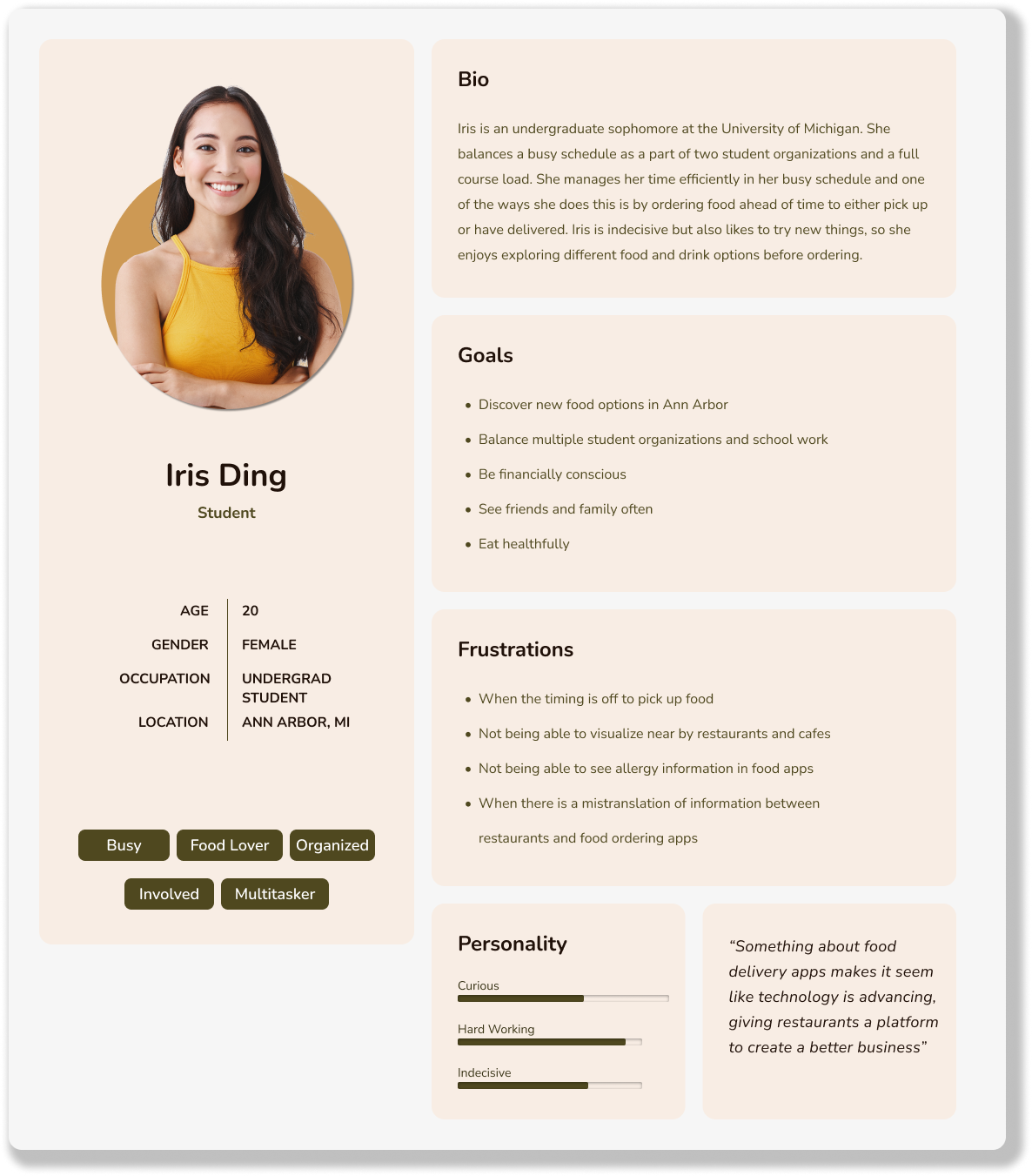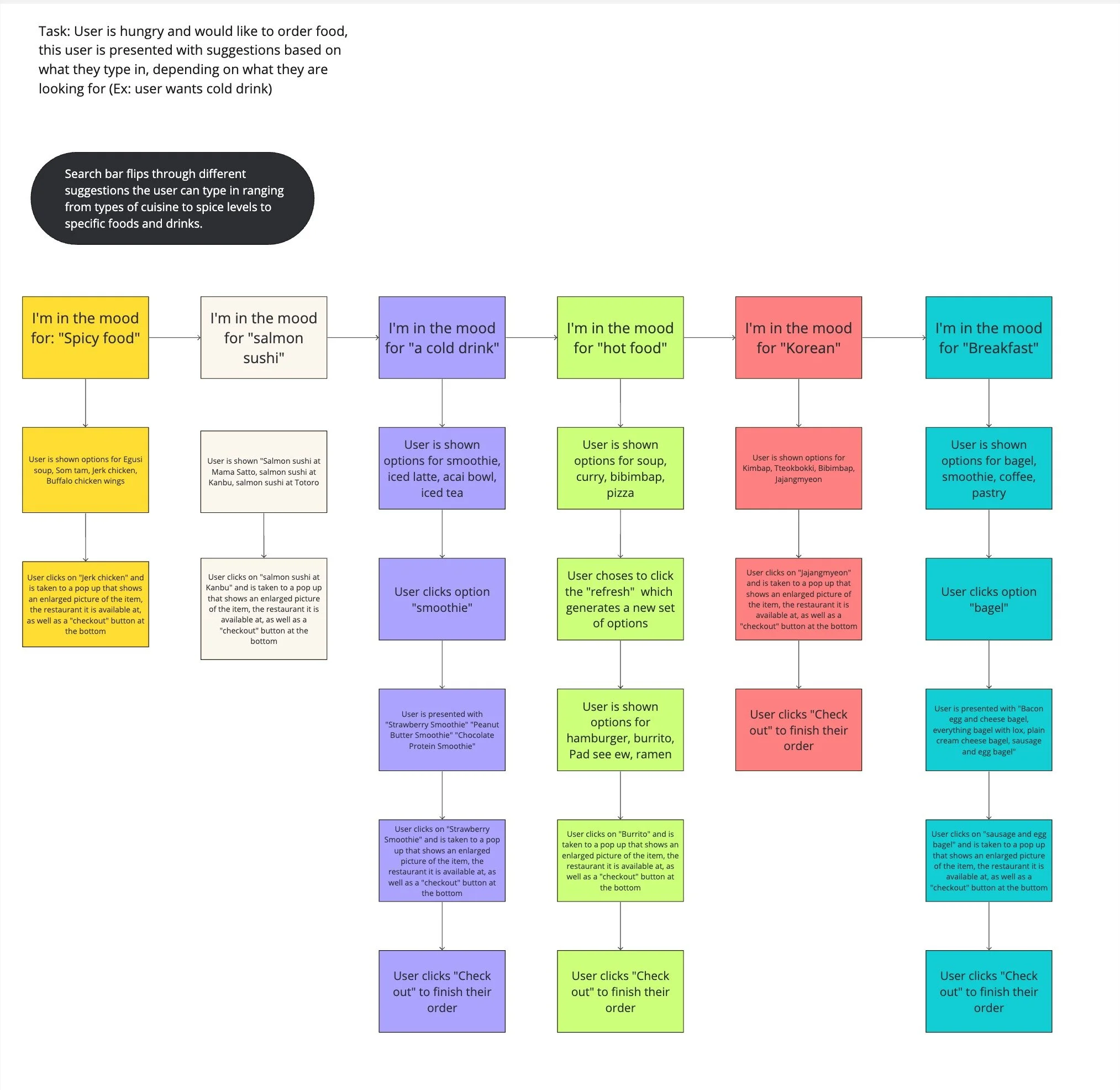User Research Study
Objective
To learn about the college student lifestyle and their experiences and associations with food ordering apps, relating to organization, feelings on the college experience, self-care management, values of relationships, and the role that food ordering apps play in their everyday life as a college student relating to positive and negative experiences. As well as to draw insights through discovery-based research to develop a feature on food apps that allows for food and drink exploration when the user is unsure of what they want to order or if the user knows exactly what they want to order.
Context
User research project for the course SI 422: Usability Needs and Evaluation at the University of Michigan
Timeline
Winter semester at the University of Michigan, February 2024 - April 2024 (9 weeks)
Feelings about food
Healthy Eating
Cooking and meals
Persona
Task Analysis
Role
Lead UX Researcher
Financial
Conscious spending
Conscious spending methods
Methods
User experience research, Interviews, User Collage Activity, Thematic Analysis & Coding, Affinity Diagramming, Persona, and Task Analysis
Research Processes
I started my research by outlining my inclusion and exclusion criteria to only include: College students ages 18-22 of different backgrounds who frequently utilize food and drink ordering apps.
Potential participants were screened further to ensure their frequent usage of technology and familiarity with food-ordering apps.
I then facilitated five interviews and guided the participants through a series of questions relating to their general routines, time management organizational skills, and experiences related to food ordering apps. The participants also participated in a collage activity to further understand the experiences and emotions associated with being a college student. The assortment of images were chosen intentionally to be expanded upon, eliciting a natural flow of conversation prompted with questions.
Once I had completed all interviews I categorized common threads through codes which later guide thematic analysis. My codes included Positive relationships, Feelings about college, Time management, Exploration, Technology, Feelings about food ordering apps, Feelings about food, Financial, and Self-care. These codes were further broken down into sub-code categories. To visualize this information, I created an affinity diagram.
Positive Relationships
Family
Relationships with other experiences
Friends
Connecting with others
Feelings about food ordering apps
Negative experiences/ associations
Convenience
Expectations
Suggestions of improvement
Positive feelings
Affinity Diagrams
Feelings about college
Negative feelings
Environment
Living on campus feelings
Positive feelings
Time management
Organization + Scheduling
Convenience
Routine + Lifestyle
Pain points
Prioritization
Exploration
Not prone to exploration
Positive feelings
People's opinions
Methods of exploration
Self-care
Methods
A. Spending time with friends
B. Spending time with self
Struggles
Technology
Negative experiences/ associations
UI that is important to the user
Mistrust
Important factors for user
Insights
Aggregating my research into a persona and task analysis allowed me to see the full scope of my research. From these deliverables, I have gained insight into my main user group of college students.
The persona culminates the central themes between the five user interviews. This shows that the average college student is a multitasker who is heavily involved in student organizations, finds that food-ordering apps help them manage time, and is financially conscious.
The task analysis describes the steps of what a user would go through if they want to order something and know exactly what they are looking for, or vaguely know that they want a type of cuisine, temperature, breakfast, etc. The more specific the prompt the user types in, the fewer options they are presented with. The more open-ended the prompt, the more options the user is presented with, to help them narrow down their choices. This task analysis displays the actions of each step in this process, ranging from specific items to more vague inputs.Reflection
A limitation of this research is the lack of consideration for participants' dietary restrictions. This oversight may have excluded valuable perspectives on how food-ordering apps address the needs of individuals with specific dietary requirements. Exploring the experiences of users with dietary restrictions could reveal unique frustrations and challenges, offering insights to better tailor my prompt-based feature to their needs. To address this, future research will include interviews with individuals who have diverse dietary restrictions.



